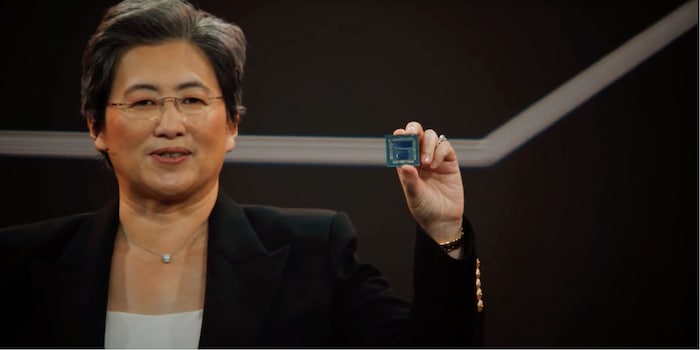
News about the AMD Zen 3+ and FidelityFX Super Resolution
AMD CEO Dr. Lisa Su revealed details about upcoming products and technologies at the Computex keynote. Here’s what gamers need to know about what’s presumed to be the Zen 3+ processors as well as FidelityFX Super Resolution (FSR) upscaling.
It’s not yet clear if the processors – which are supposed to be released towards the end of this year – are actually the Zen 3+. Su didn’t mention the name in the keynote. However, all indications point to this being the Zen 3+, or Ryzen 6000, series.
Unlike the Zen 3 processors in the Ryzen 5000 series, the upcoming CPUs rely on 3d chip-stacking. In a nutshell: a so-called 3D vertical cache gets stacked on top of the core complex, or Core Chiplet Die (CCD). The cache in this case is 64 MB SRAM. AMD developed this process in collaboration with TSMC.
The cache sits directly above the L3 cache of the CCD. It’s not yet entirely clear whether the new cache extends the L3 or if it’s a kind of L4 cache. According to AMD, gaming performance is supposed increase by up to 15 per cent as a result of this 3D vertical cache technology. That would correspond to a performance leap between two CPU generations.
It’s also unclear how AMD will integrate the revised chips. The prototype that Su showed at the keynote is a Ryzen 9 5900X, which is based on the socket AM4. The AM5 should, however, come later this year.
AMD hopes to keep pace with Intel using this technology. Intel is releasing its new Alder Lake processors in the second half of 2021.
FidelityFX Super Resolution (FSR) specs
AMD has finally revealed more details about the counterpart to Nvidia’s Deep Learning Super Sampling (DLSS). It’s an upscaling technology that converts low resolutions to higher resolutions, allowing gamers to enjoy better performance with minimal loss in quality. AMD hasn’t yet revealed exact details, but it has revealed some information about the performance.
Four FSR settings are supposed to be available: Ultra Quality, Quality, Balanced and Performance. According to AMD, this means up to 59, 102, 153 or 206 per cent more performance. AMD is currently working with several game studios and developers to integrate FSR. Unlike Nvidia’s DLSS, FSR isn’t proprietary, so it’s supposed to be supported by over 100 CPUs and GPUs. As always, information released by the manufacturer on performance should be taken with a grain of salt.
This feature is scheduled to launch in June. AMD plans to release a list of supported games and more details on 22 June 2021.
From big data to big brother, Cyborgs to Sci-Fi. All aspects of technology and society fascinate me.
From the latest iPhone to the return of 80s fashion. The editorial team will help you make sense of it all.
Show all